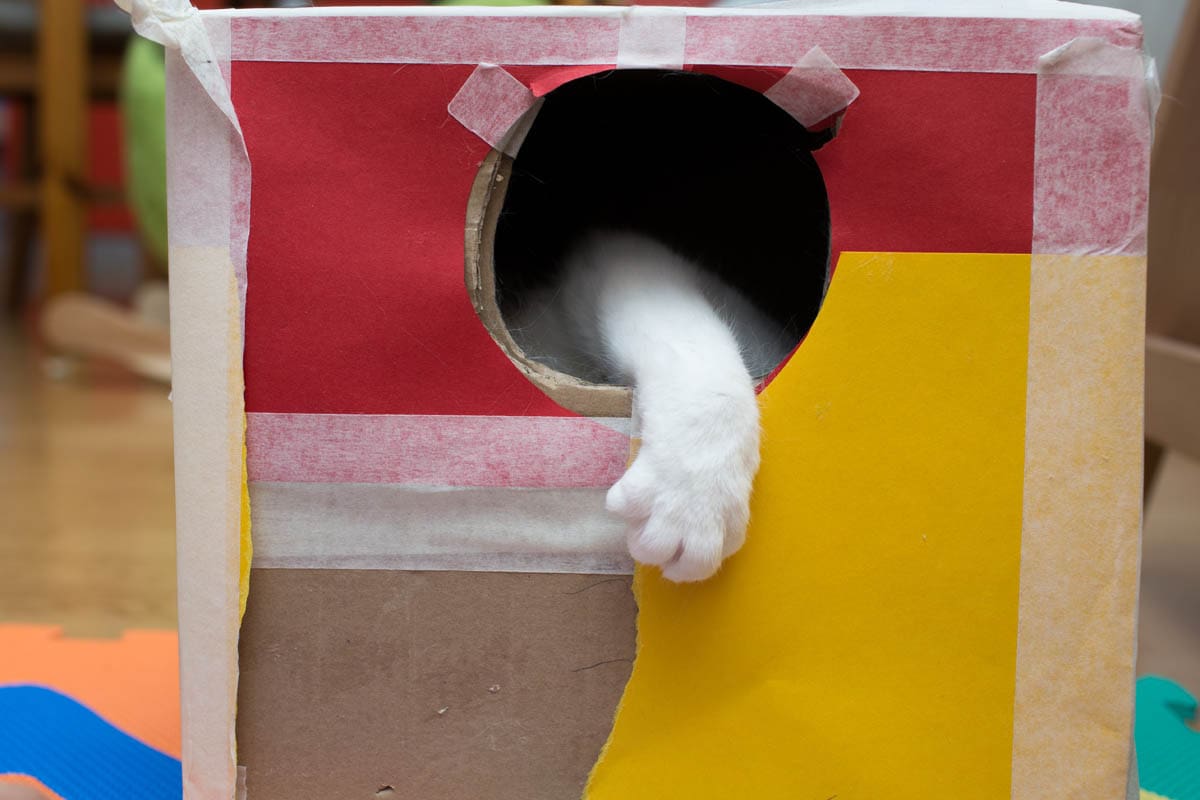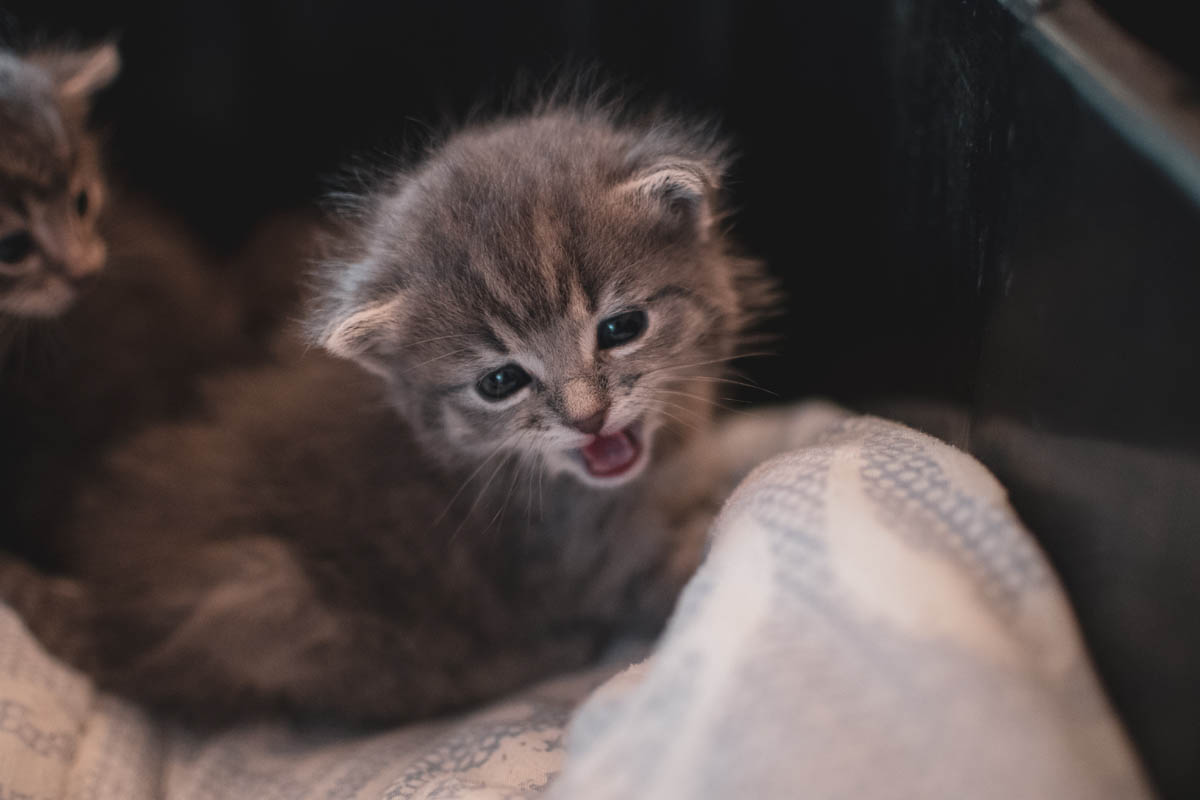What is a nesting box?
The nesting box is a box where your pregnant cat will give birth and care for her litter of kittens in the first few weeks of life.
Set up the nesting box two weeks before the cat is due so that she can settle in. Don’t force her to stay in the box at first, just slowly introduce it to her, making it as comfortable as possible. Place her food and water bowls and litter tray in the room with the nesting box.
At what stage do cats start nesting?
The gestation period of a cat is 60 to 65 days. About a week before delivery, a pregnant cat will begin to display nesting behaviors. She’ll become less active and devote her energy to preparing her nest in a quiet, secluded space.
Finding the perfect spot for the nesting box
Place the box in a quiet room. A home office, bathroom, or spare room with little to no foot traffic is ideal. The room should be warm and the nesting box should have low light.
Sometimes, despite your best efforts, the queen will refuse to use her nesting box in preference of another location. After the kittens are born, she may try to move her kittens to a new location, too.
If this happens, close doors to other parts of the house to prevent her from switching locations. If she seemingly shows a preference for one room, as long as it is suitable, consider moving the box. Some queens like to still be near their owners; others would rather be on their own in the early weeks of motherhood.
Types of nesting boxes
Your cat may appreciate different types of nesting boxes to select from. The nesting box should be comfortable for your cat and her kittens while keeping her little ones safe. It should be covered, but have an open access point that your cat can get in and out of. Potential nesting boxes for your cat include:
- Cat carrier
- Cardboard box
- Plastic bin
- Clean cat litter pail
- Unused and clean covered litter box
Cat nesting box ideas
The nesting box should be large enough to accommodate the queen and her litter once they arrive. Your cat should also be able to stand up and turn around in her nesting box.
A sturdy cardboard box is a perfect nesting box for cats. The box should be enclosed on all sides, with a hole cut out at the front for the queen to climb in and out of.
When cutting out the hole, raise it approximately 9 inches so that the newborn kittens can’t roll out. Another option for a nesting box is a new enclosed litter tray, with the clear plastic door removed. The advantage of this is that it can be cleaned out if necessary. Don’t use an old litter tray.

What should I put in my cat’s nesting box?
Line the bottom of the box with a 1-inch layer of newspapers. On top of that, place an absorbent puppy training pad and cover the pee pads with soft, clean blankets or towels. Soiled bedding should be removed after the birth and disposed of or laundered. Regularly replace with clean, fresh bedding.
Kittens can’t regulate their own body heat for the first few weeks of life. If the litter is due in the cooler months, the queen and her kittens may appreciate a heating pad. Make sure it doesn’t cover the entire bottom surface, so they can move away from the heat if necessary. Check that the temperature isn’t too hot.
What to do with the nesting box after the mother delivers the kittens?
The nesting box shouldn’t be removed after the queen gives birth. The queen will take care of cleaning her kittens, but the blankets or towels in the nesting box will be soiled—replace them with clean ones following delivery. The queen and her kittens will continue to use the nesting box until a few weeks into life when they begin to walk.
How to clean a cat nesting box?
The queen will do most of the work when it comes to keeping her kittens clean. Through the first weeks of life, she’ll stimulate the kittens and ingest their waste.
After birth, and if there are any bathroom accidents, simply swap the soiled towels or blankets with fresh ones. If you need to wipe the nesting box down, use warm water or a pet-friendly, unscented cleaner.

Frequently asked questions
Is it okay to move the nesting box?
If the birthing location is safe, quiet, and clean, then the nesting box shouldn’t be moved. If the nesting box is in an unsafe location, moving the nesting box may be needed. Encourage the queen to use the new location by blocking access to the previous nesting box location.
How often should you clean the nesting box after a cat has kittens?
Especially during the first two weeks of life, you should avoid interfering with the queen and her newborn kittens. The nesting box should be cleaned by replacing the towels, blanket, or newspaper immediately after delivery. The nesting box should be cleaned only as needed during the next few weeks.
How can I encourage my cat to use the nesting box?
Close off close doors to other parts of the house to prevent the queen from using another location for nesting. If she seemingly shows a preference for one room, as long as it is suitable, consider moving the nesting box. Place her water, food, and litter box near the nesting box location.

